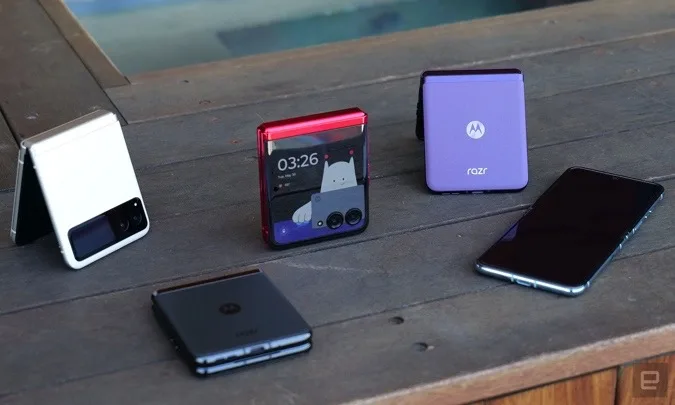Mark Zuckerberg has revealed the Meta Quest 3, the company’s long-rumored, next-gen virtual reality headset, just a few days before Apple’s WWDC, where it’s expected to debut its own first, mixed reality headset. As with the Quest Pro, the Quest 3 supports mixed reality and offers full-color passthrough. This enables users to see a color version of the physical space around them, and the headset will apparently be able to add augmented reality elements into it.
Zuckerberg says it will offer twice the graphical power of the Quest 2, and it’s 40 percent thinner than its predecessor. Meta has redesigned the controllers, too, nixing the outer tracking rings and adding TruTouch haptic feedback. The headset will start at $500 for 128GB of storage, and it’ll be available this fall in all countries the Quest 2 is available. Expect to hear more details at its on September 27th.
If you already own a Quest headset, there’s good news too: An upcoming software update will boost the performance of the Quest 2 and Quest Pro. Meta says the CPU of each headset will get a performance increase of up to 26 percent, with a GPU boost of up to 19 percent on Quest 2 and 11 percent on Quest Pro. Dynamic Resolution Scaling will be enabled on both headsets as well, to help stabilize frame rates.
– Mat Smith
The Morning After isn’t just a newsletter – it’s also a daily podcast. Get our daily audio briefings, Monday through Friday, by subscribing right here.
The biggest stories you might have missed
‘
And they could be unveiled at WWDC.
According to Bloomberg‘s Mark Gurman, Apple is testing a couple of high-end Macs powered by its new M2 Max processor and the M2 Ultra chip that the company has yet to announce. Apple debuted the M2 Max on its 14- and 16-inch MacBook Pro laptops, as well as its Mac mini, earlier this year. The desktop with the chip will reportedly have eight high-performance cores, four efficiency cores and 30 graphics cores. It will also have a heady 96 GB of RAM. Meanwhile, the unannounced M2 Ultra chip is supposed to be the more powerful of the two, with twice as many processing cores. Specifically, the chip is expected to have 16 high-performance, eight efficiency and 60 graphics cores, though Bloomberg reports the company will offer a more powerful version with 76 graphics cores.
Continue reading.
Still cute.

Fiat
Fiat already has its own cute EV in the 500 series, but it has now gone even tinier in its latest urban mobility push. The Topolino is essentially a rebadged Citroen Ami, sharing the Ami’s drivetrain (both Citroen and Fiat are under the Stellantis umbrella) and looks nigh-on identical, apart from a few tweaks. It has a 5.5kWh battery that delivers a 47-mile range, and it’ll hit a top speed of 28MPH. The Topolino is technically a “quadricycle” – not a car – so you can buzz around cities in it without needing a driver’s license.
Continue reading.
And a budget-friendly foldable is coming soon.

Engadget
Motorola returns to the foldables. Headlining the 2023 Razr family is the Razr+ (Razr 40 Ultra in Europe), a flagship-level model whose centerpiece is a comparatively huge 3.6-inch, 1,056 x 1,066 external display running at up to 144Hz. That’s substantially bigger than other flip-phones.
Like Samsung’s Galaxy Z Flip, the device opens at different angles for hands-free recording and video viewing. A redesigned hinge also makes this the thinnest foldable phone on the market when closed, Motorola claims. The company will sell the Razr+ with 256GB of storage on June 23rd through its website on AT&T, Google Fi, T-Mobile, Optimum Mobile and Spectrum Mobile for $1,000, or $41.67 per month in a two-year plan. That’s well below the price of past US models. We’ve had a and the rest of Motorola’s foldable family.
Continue reading.
It can even create 3D assets from videos taken by smartphones.
NVIDIA has introduced a new AI model called Neuralangelo, which can create 3D replicas of objects from 2D videos, whether they’re classic sculptures or run-of-the-mill trucks and buildings. Neuralangelo works by selecting several frames showing the subject from different angles in a 2D video, so it can get a clear picture of its depth, size and shape. It then creates a rough 3D representation of the object before optimizing it to mimic the details of the real thing. NVIDIA said it can even create large-scale vistas from drone footage.
Continue reading.
Credit: Source link


Comments are closed.